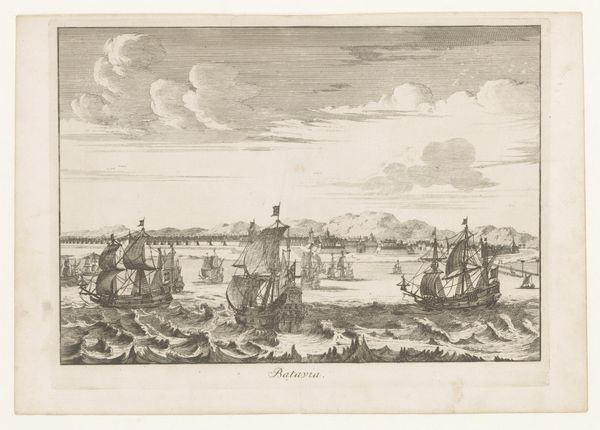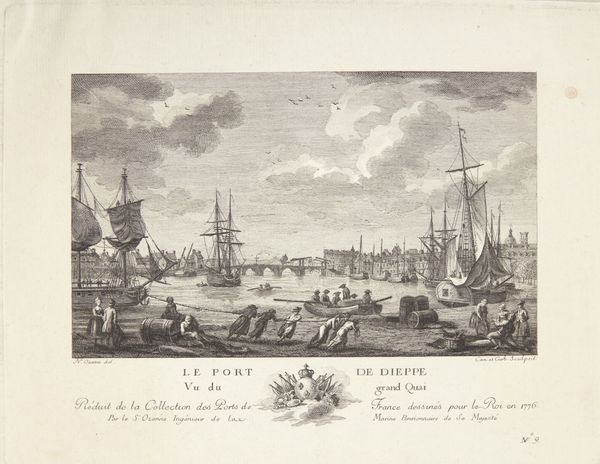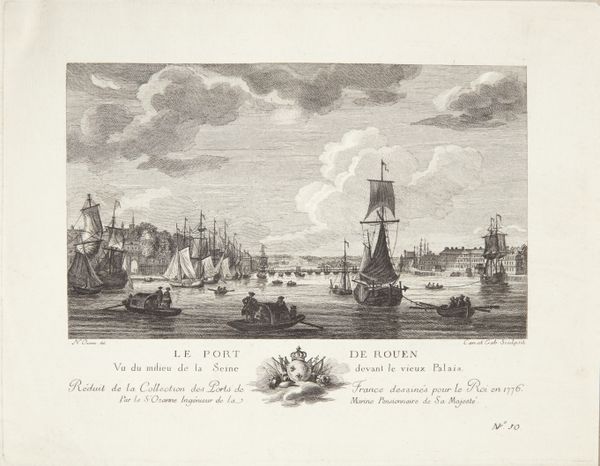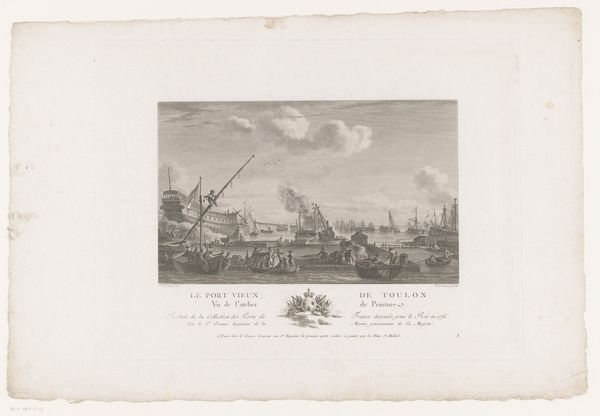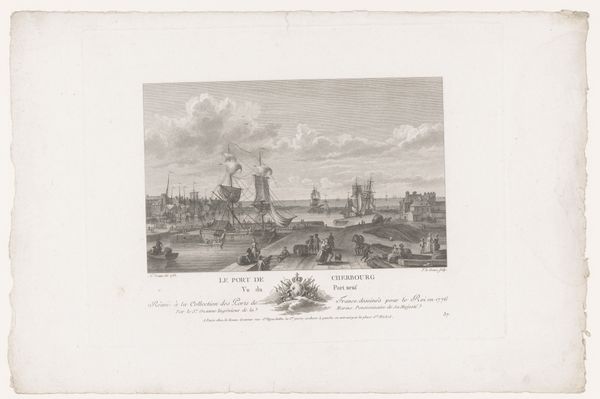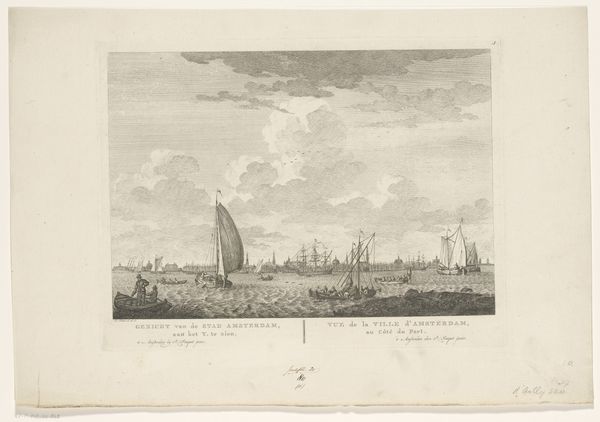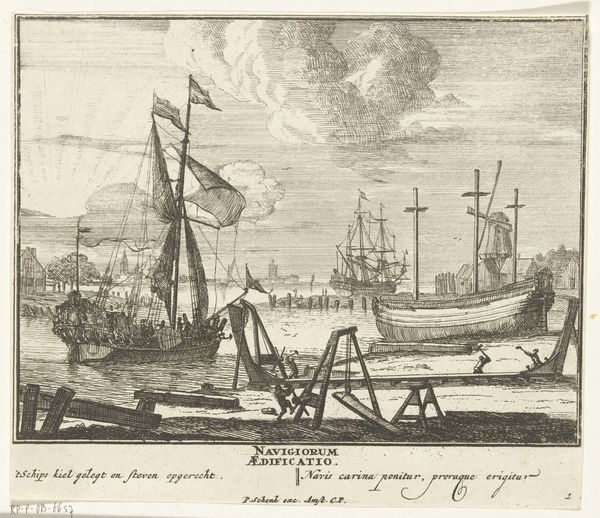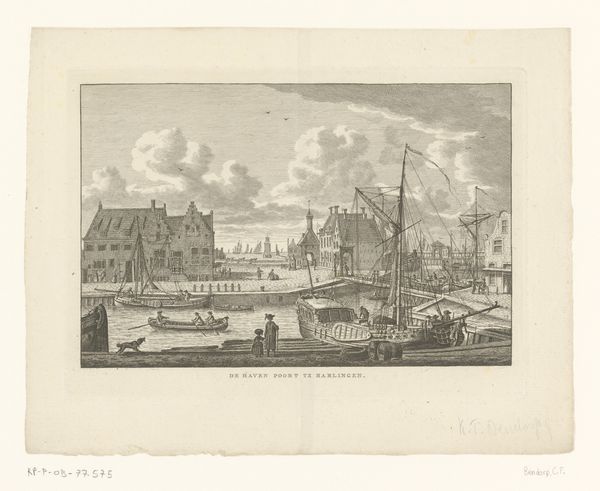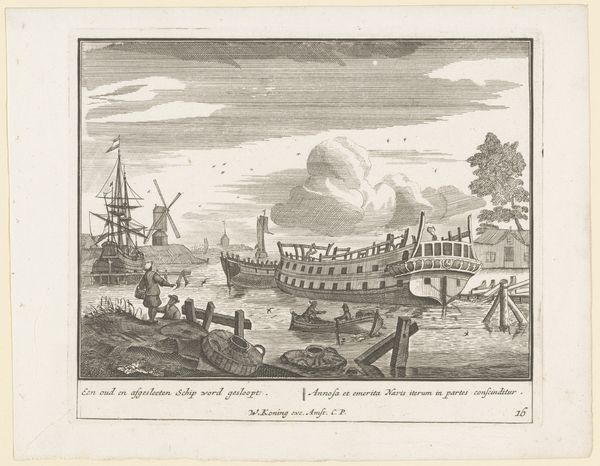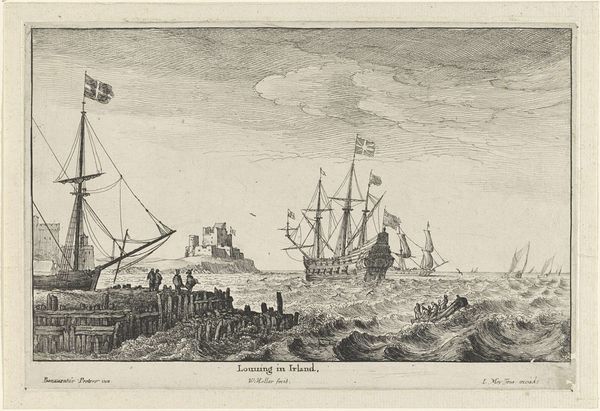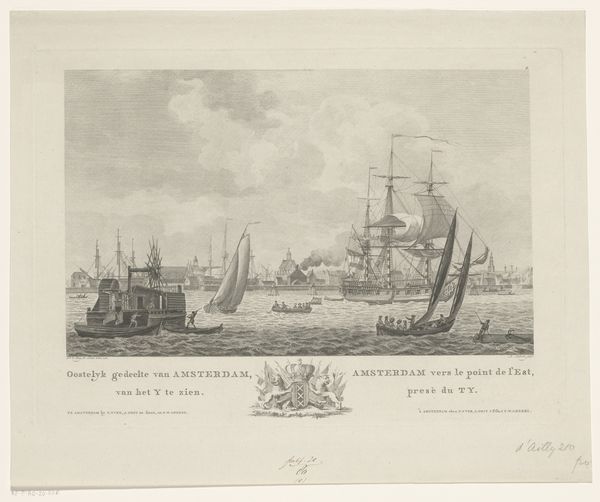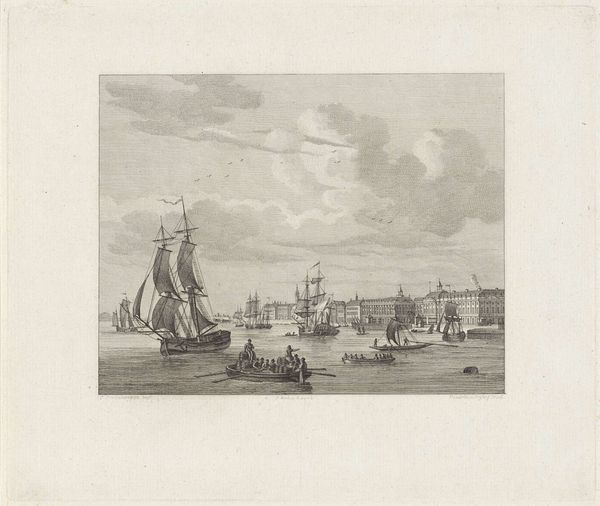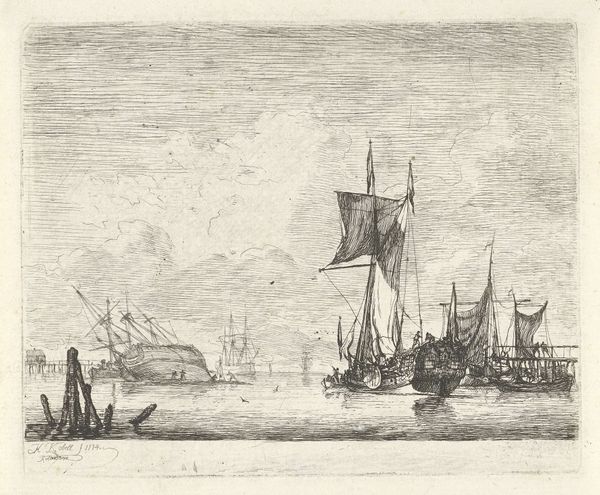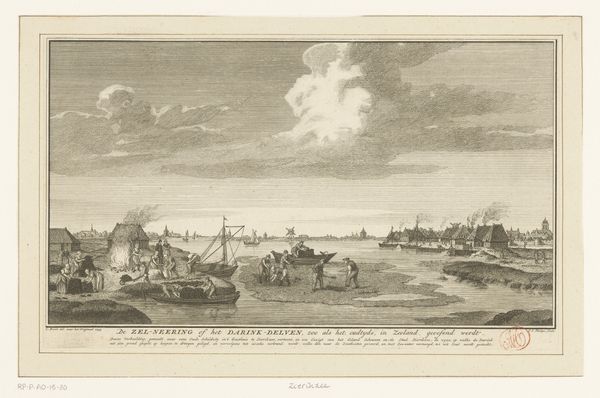
print, etching
# print
#
etching
#
landscape
#
history-painting
Dimensions: 224 mm (height) x 288 mm (width) (plademål)
This print, Saint Servan, was made in France, in 1776, by an anonymous artist. It was realized through engraving, a printmaking technique that demands precision and meticulous labor. The process begins with incising an image onto a metal plate, in this case, likely copper, using a tool called a burin. The incised lines hold ink, and when pressed against paper, transfer the image. Look closely, and you can see how the varying depths and densities of lines create shading and detail. The material qualities of metal and paper are critical here, enabling the reproduction of images on a scale unimaginable before the advent of printmaking. Prints like this one played a vital role in disseminating information and shaping perceptions of the world. As a marine port scene, this print reflects the importance of maritime trade and naval power in the 18th century. The depiction of labor, from the sailors on the ships to the workers on the docks, reminds us of the human effort that underpinned these global networks. Appreciating the material and the making, we gain insight into the cultural values and power structures of the time.
Comments
No comments
Be the first to comment and join the conversation on the ultimate creative platform.
